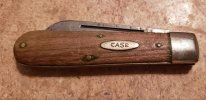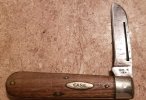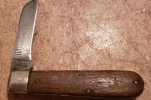Blue Sky
Gold Member
- Joined
- Jun 16, 2002
- Messages
- 3,502
Today it’s called Bushcraft, a hundred years ago Horace Kephart called it Woodcraft. Same thing, different name, nothing new. I think Woodcraft is more accurate, personally. To try and add some perspective to the knife debate, just look at the knives preferred by the two icons of the outdoors, Kephart and Nessmuk. They could hardly be more different, yet each of these two experienced gentlemen felt it was best for their needs. Conclusion? There is no best, just what works best for you. But the discussion is fun anyway.






